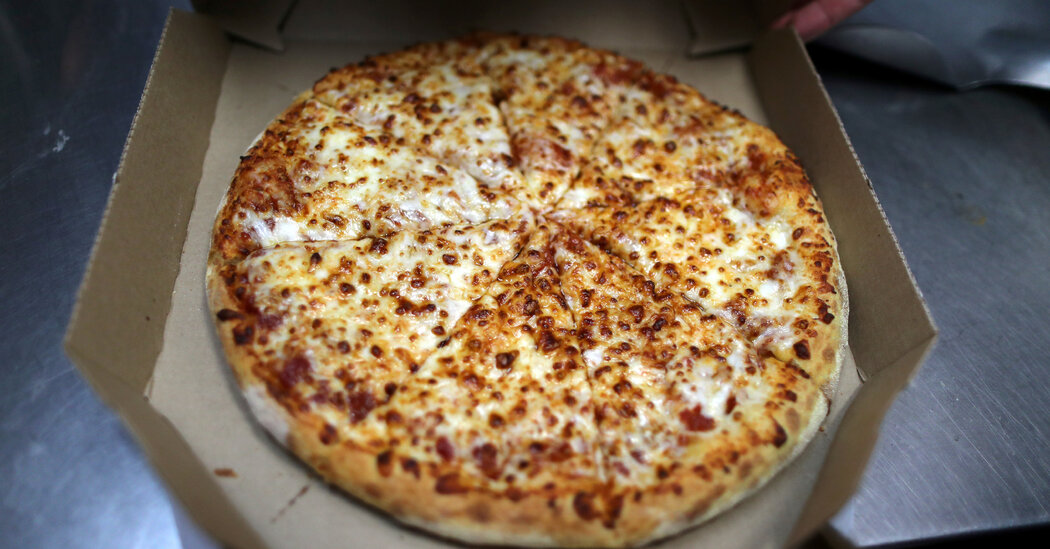
ROME — It turns out that Italians don’t necessarily like pineapple on their pizza, after all. Or at least not enough to keep nearly three dozen Domino’s Pizza franchises afloat.
Last month, the Italian outlets of the American pizza conglomerate extinguished their pizza ovens, unable to win over picky palates in the place where pizza was invented.
Though the company’s Italian website remained live, outlets in Turin, Parma, Rome and elsewhere offered the same discouraging message: “Sun. to Sat. CLOSED.” Domino’s international map was more up-to-date. It listed 90 international markets, but Italy was not among them.
Bloomberg reported Tuesday and court documents show that Domino’s Italian franchise had “sought protection from creditors” earlier this year “after running out of cash and falling behind on its debt obligations.”
Bloomberg said the company had 10.6 million euros ($10.8 million) of debt at the end of 2020.
The closure ended an ambitious business venture that had aimed to tantalize Italians looking to try something new, like cheeseburger pizza or BBQ chicken pizza.
Domino’s Pizza Italia opened its first outlet in Milan in 2015, via a franchising agreement with a local company, ePizza.
In a legal filing in Milan in April, lawyers for ePizza said that the company had been optimistic about entering the Italian market in 2015, “the second largest market in the world” of pizza eaters, after the United States. At the time, too, Italy didn’t have a structured, large scale, home delivery model like the Domino’s Pizza model.
Just two years ago, media reports relayed the Italian company’s plans to open 850 stores over the next decade, with the aim of claiming a 2 percent stake of the national pizza market.
By 2021, 34 restaurants bore the Domino’s brand. And a representative for Domino’s Pizza Italia had cheered the opening of the fifth restaurant in Rome, suggesting that Italians had been open to American-style pizza. There were Italians “who are not afraid of putting pineapple on a pizza,” the representative had said.
But the coronavirus pandemic changed everything.
With restaurants and bars closed for long stretches of time during sundry lockdowns, many began to adopt the takeout and home delivery model that Domino’s pizza had sought to dominate Italy with. The proliferation of food delivery platforms like Deliveroo, Glovo or Just Eat “have notably increased the competition” for ePizza, according to the April legal filing in Milan.
Representatives for ePizza and Domino’s Pizza in the United States and in Italy did not immediately respond to requests for comment.
Other culinary ventures that naysayers said were doomed to fail in Italy have done quite well. When Starbucks opened its first Italian venue in 2018, many said that Italians accustomed to thimble-sized espressos would snub the company’s maxi sizes, and its prices. But Percassi, the Italian licensee for the American company, has since opened 18 stores throughout northern and central Italy, including a drive through.
Alessandro Lazzaroni, for five years the chief executive of Domino’s Pizza Italia, left the company in December 2020 and is now chief executive of Crazy Pizza, a high-end pizzeria started by the Italian businessman Flavio Briatore, a former director of the Benetton and Renault Formula One racing teams. Crazy Pizza made headlines in Italy this summer after Neapolitan pizza makers complained that the pizzas were too expensive.
And after all, Italians are picky about their pizza.
Stefano Auricchio, the director general of an association that protects “real Neapolitan pizza” said he was sorry to hear that Domino’s Pizza had closed “because it impoverishes the market in general,” as families have fewer options to choose from.
That said, he thought that in recent years Italians had evolved their palate for pizza and were looking for more “artisanal products” over chain brands. “There is a tendency now to recognize the work of the chef” and the quality of the products, he said.
According to a study recently commissioned by the association, Neapolitan pizza evoked concepts of “quality, well being and family,” notions that large pizza chains “with their standardized products” struggled to match.
“Neapolitan pizza is the mother of all pizza, even Italian pizza,” he said. “It all started here.”
But food does go on. One former Domino’s Pizza site on a busy Rome street was closed on Tuesday. But a big sign had been painted on the roll up door announcing the opening of a restaurant selling piadina, a flat unleavened bread, griddled and stuffed with various ingredients, that is popular in central Italy: “Coming Soon. Gino Piada.”



